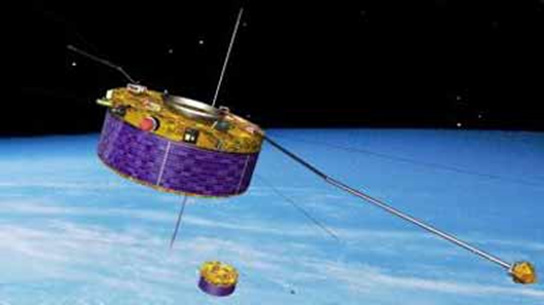 |
The terrestrial mission
Cluster is a unique multi-spacecraft mission launched in 2000 by the European Space Agency. Four identical satellites fly in a tethraedral formation on an eliptic orbit between 19000 and 119000 kilometer altitude. The main objective of Cluster is to investigate the Earth’s magnetosphere and its interaction with the solar wind (Escoubet et al., 2001). The spacecraft continue to collect data since 2000, the mission has been extended until 2016. |
The Cluster mission consists on four identical spacecraft flying in a tetrahedron formation whose spatial scale varies between several hundred kilometers and thousands of kilometers. Each spacecraft is equipped with instruments that measure the AC and DC component of the electric and magnetic field, the plasma ion composition, the ion and electron velocity distribution functions and their integrated moments, like density, velocity, temperature. The data from the four identical Cluster satellites offer a good evaluation of three-dimensional and timevarying phenomena and make possible to distinguish between spatial and temporal variations. Although they spend long time periods in the magnetosphere, the Cluster spacecraft exit also in the solar wind where they provide measurements of turbulence at 1 Astronomical Unit (AU). The Cluster data base is maintained and updated by ESA and is available through a web based service http://caa.estec.esa.int (the Cluster Active Archive). The Cluster experiments targeted by STORM are FGM, CIS, WHISPER and STAFF.









